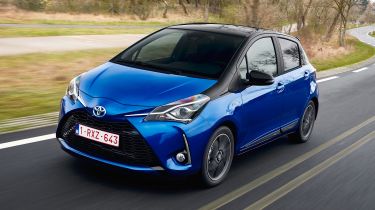Toyota Yaris Hybrid hatchback (2011-2020) - Engines, drive & performance
Yaris Hybrid is easy to drive, but not very enjoyable
The Toyota Yaris is an easy, unthreatening car to drive rather than one that’ll put much of a smile on your face – but this is exactly what millions of drivers want in a supermini.
The controls are light and the car is maneuverable, and there are no clues that the hybrid is anything other than a conventional petrol-powered car once you’re at cruising speed. On twisty roads, the extra weight of the battery and electric motor don’t really change the feel of the Yaris, as its steering isn’t the sharpest in the first place.
As with other versions, the Yaris Hybrid will lean in corners if you push it hard, but doing so isn’t especially fun. If you’re an enthusiastic driver, you’ll feel more at home in a Ford Fiesta or SEAT Ibiza. Unfortunately the Yaris’ uninspiring handling isn’t made up for by a smooth ride – it can be fidgety at cruising speeds and potholes send shudders through the body.
Toyota Yaris Hybrid engine
Understandably, the Yaris Hybrid has been set up for optimum fuel economy, but 0-62mph in 11.8 seconds isn't particularly spritely for a 1.5-litre petrol engine boosted by an electric motor.
That the Yaris Hybrid can travel up to a claimed 1.2 miles on battery power alone explains its impressive urban fuel economy. What’s more, the petrol engine doesn’t need to come into play until 30mph is reached, although it usually starts at well below that speed. A clever feature is regenerative braking, which transforms energy released by deceleration into electricity to top up the battery.
Do note the Yaris Hybrid comes with a CVT automatic gearbox, which is smooth and quiet at low speeds, but causes the engine to hold on to higher revs than you might expect for the road speed you’re travelling at. This can make for noisy driving.












